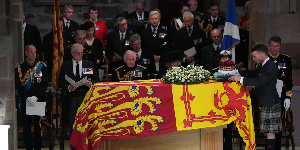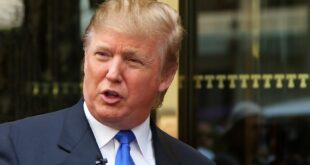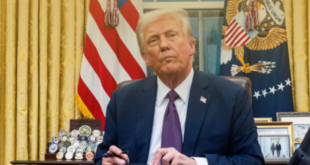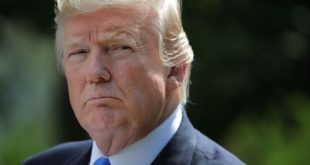It would be a ceremony of global proportions that will bring to an end more than a week-long celebration to mark the passing of the longest-reigning monarch of Britain, Queen Elizabeth II.
Already, the might of the world’s leaders have already landed in London, as they join the rest of the world to pay their final respects to the monarch.
As has already been communicated, apart from the President of the United States of America, Joe Biden, who has received a special dispensation to arrive in his Beast, all other world leaders have been encouraged to arrive only via commercial flights, from where they would be bused to the venue of the event.
The reason: there would be no space to accommodate private planes as airports in the United Kingdom have been closed for the ceremony.
And now, after days of lying in state, the body of the late Queen, and her husband, Prince Philip – who died a year earlier, will finally be reunited in a vault beneath St George Chapel.
The British police have also stated the huge task and burden on their hands today as they host the sea of world leaders at the grand state funeral.
Describing it as perhaps the biggest security threat it has ever been faced with, the police in Britain have indicated they are well-prepared to contain the pressure regardless.
But what is the day actually going to look like?
The BBC details all of the events as follows:
The Queen’s body will continue to lie in state at Westminster Hall, in the heart of London, on the morning of Monday. This is to allow more people to queue and file past the coffin.
At Westminster Abbey, the doors of the building will be opened for guests to start arriving for the service, which will begin at 11:00 am.
Leaders from the world are expected to be seated by this time. They will include senior UK politicians and former prime ministers, members of royal families from across Europe, many of whom are blood relatives of the Queen.
The Belgium King, Philippe, and Queen Mathilde, the King of Spain, Felipe, and Queen Letizia, are also expected there.
At this point, the ceremonial part of the day will begin in earnest. This will be after the Queen’s body has been lifted from the catafalque on which she has been resting since last week Wednesday afternoon.
The body will then be sent to Westminster Abbey for her funeral service.
The coffin will be carried on the State Gun Carriage of the Royal Navy, which will be pulled by 142 sailors: the carriage was last seen in 1979 when Lord Mountbatten, uncle of Prince Philip, was buried and was also used for King George VI (Queen Elizabeth’s father) in 1952.
Senior members of the Royal family, including King Charles III, his sons Prince William and Prince Harry, will follow the gun carriage in a procession.
The Pipes and Drums of the Scottish and Irish regiments are expected to lead the ceremony, along with members of the Royal Air Force and the Gurkhas.
The Royal Navy and the Royal Marines will line up the route, with a guard of honour mounted at Parliament Square, made up of all three military services, accompanied by a Royal Marines band.
The service – a state funeral, will follow strict rules of protocol such as a military procession. 2000 guests are expected at the service will be then begin at Westminster Abbey.
It is worth mentioning that since the 18th century, no monarch’s funeral service has been held in the hall, although the funeral of the Queen Mother happened in 2002.
The service will be conducted by the Dean of Westminster, David Hoyle, while the Archbishop of Canterbury, Justin Welby, will give the sermon. Prime Minister Liz Truss will read one of the lessons.
Towards the end of the funeral service, the Last Post, one short bugle call will be played, followed by a two-minute national silence.
The national anthem and a lament which the queen piper will play, will then bring the service to an end at about midday.
Following the service, the Queen’s coffin will be pulled in a walking procession from the Abbey to Wellington Arch, at London Hyde Park Corner.
With the route that has been lined up with military personnel and police, the Big Ben will ring at one-minute intervals as the procession advances slowly through the streets of the capital. Gun salutes will also fire every minute from Hyde Park.
The procession will be led by the Royal Canadian Mounted Police and will be made up of seven groups, each with their own band. Members of the armed services from the UK and the Commonwealth, the police and the NHS will also be involved.
Once again, King Charles III will lead members of the Royal Family, who will be walking behind the gun carriage of the Queen’s coffin.
Camilla, the Queen Consort, the Princess of Wales, the Countess of Wessex, and the Duchess of Sussex will join the procession inside cars.
Once the procession gets to Wellington Arch, at about 13:00, the coffin will be transferred to the new State Hearse for her final journey to Windsor Castle – the castle which has continuously housed 40 monarchs across almost 1,000 years. (
(It held a special significance to the Queen throughout her life because as a teenager, she was sent to the castle during the war years as London faced the threat of bombings, and which she eventually made her permanent home during the Coronavirus pandemic.)
The vehicle carrying the coffin will arrive for a walking procession for Windsor Castle Long Walk. The three-mile (5km) avenue will be lined up with members of the armed forces.
Members of the public will get access to the Long Walk to watch the procession pass.
The King and senior members of the Royal Family are later expected to join the procession for the Quadrangle, inside Windsor Castle.
The castle Sebastopol and Curfew Tower bells will ring every minute and gun salutes from the grounds of the castle will be fired.
And then the coffin will enter St George Chapel for a committal service.
The committal service will be attended by a smaller, more personal congregation of about 800 guests, and will be conducted by the Dean of Windsor, David Conner, with a blessing from Archbishop of Canterbury, Justin Welby.
The service will include traditions symbolising the end of the Queen’s reign.
The Crown Jeweller will then remove the Imperial State Crown and the Sovereign orb and sceptre from the top of the coffin, separating the Queen from her crown for the final time.
At the end of the last hymn, King Charles will then put the queen company camp colour, or flag of the Grenadier Guards on top of the coffin. The Grenadier Guards is the most senior of the Foot Guards who carry out ceremonial duties for the monarch.
At the same time, the Lord Chamberlain, former MI5 chief, Baron Parker, will “break” his wand of office and place it on top of the coffin. The breaking of the white staff will signal the end of his service to the sovereign as her most senior official in the royal household.
The Queen would then be lowered into the royal vault and the Sovereign Piper will play before the blessing and the singing of ‘God Save the King.’ The performance by the piper at Windsor is something the Queen personally requested, Buckingham Palace has said.
The committal service will come to an end and the king and members of the Royal Family will leave the chapel.
In the evening, at a private family service, Queen Elizabeth II will be buried together with her late husband, the Duke of Edinburgh, at the King George VI Memorial Chapel, which is located inside St George Chapel.
An engravement on the marble slab of the Queen’s grave will read, ELIZABETH II 1926-2022.
Source: www.ghanaweb.com
 Home Of Ghana News Ghana News, Entertainment And More
Home Of Ghana News Ghana News, Entertainment And More





